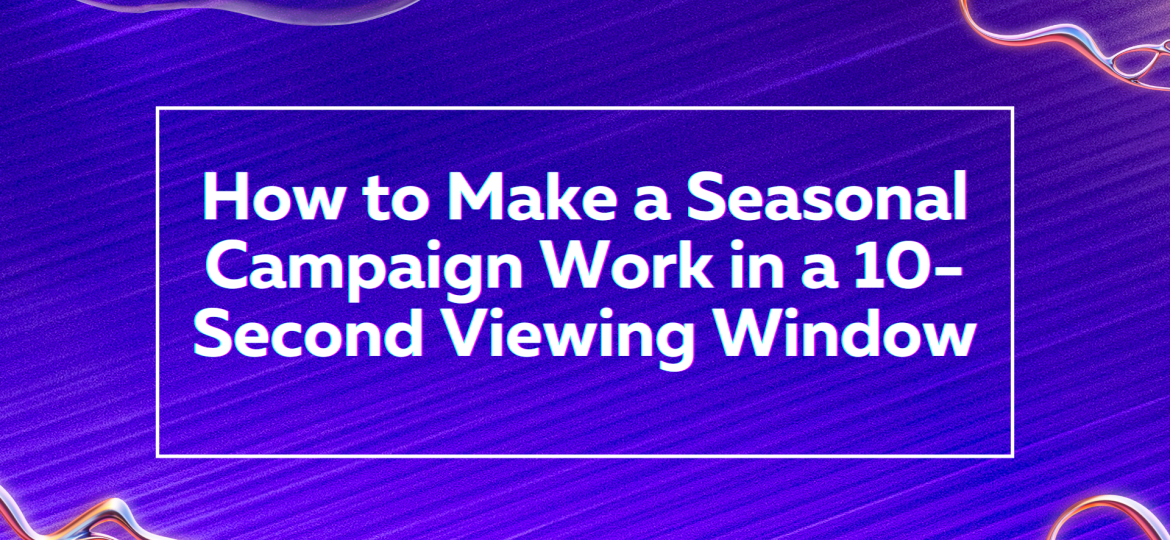How to Make a Seasonal Campaign Work in a 10-Second Viewing Window
Modern visual marketing operates on limited timeframes. Whether at a retail point of sale, public event, or branded environment, campaigns have approximately 10 seconds to achieve initial engagement. For advertisers using 3D holographic formats, this presents a unique performance challenge.
3D holographic ads are inherently attention-grabbing. However, converting that attention into clear communication, seasonal relevance, and measurable impact requires strategic design within extremely short exposure windows.
This guide outlines a professional framework to structure and execute high-performing seasonal campaigns using 3D holographic advertising, optimized for viewer attention spans of 10 seconds or less.
1. Understand Seasonal Context
A seasonal campaign must leverage cultural and temporal context. Success relies on immediate relevance without falling into visual clichés.
Avoid Generic Creative:
- Overused visuals (e.g., snowflakes in winter, red hearts in February)
- Default soundtracks or template animations
Recommended Strategy:
- Reference region-specific holidays and culturally significant events
- Emphasize time-limited availability or seasonal urgency
- Use high-recognition symbols that communicate meaning in one glance
The visual language should balance speed of recognition with brand distinction.
2. Structure Through Visual Hierarchy
Unlike static media, 3D advertising enables layered depth. Structuring the visual experience using spatial hierarchy guides viewer’s focus effectively.
Execution Guidelines:
- Place the primary call to action or message in the front visual plane
- Position brand assets and context layers in mid or rear planes
- Use Z-axis movement and transitions to draw focus
Color Strategy:
- Align color palette with the seasonal theme (e.g., gold and deep red for winter, teal and yellow for summer)
- Apply contrast to separate elements clearly across viewing distances
The content should be optimized for 3D environments, not flattened visuals.
3. Design for Real-World Viewing Conditions
Design assumptions must be validated by typical viewer behavior. Most viewers will encounter holographic displays in transient, distraction-heavy environments.
Key Considerations:
- Assume a limited attention span (2–10 seconds)
- Account for physical movement (e.g., walking by in-store)
- Avoid dependency on long-form animation cycles
Recommended Timing Structure:
- 0–2 seconds: Capture attention using movement or high-contrast visuals
- 3–7 seconds: Deliver seasonal message, value proposition, or offer
- 8–10 seconds: Reinforce brand identity with visual payoff or CTA
Shorter is more effective. Messaging must be delivered before full animation cycles complete.
4. Minimize Text, Maximize Visual Impact
The purpose of 3D advertising is visual engagement, not information transfer. Overuse of copy, charts, or multi-step instructions reduces clarity and slows comprehension.
Best Practices:
- Replace descriptive copy with motion direction or iconography
- Use animations to simulate product usage or benefits
- Emphasize emotional triggers such as nostalgia, seasonal excitement, or exclusivity
The content must appeal visually and emotionally, rather than rely on technical explanations.
5. Optimize Animation Loops for Entry at Any Point
Viewers will rarely start at the beginning of a video loop. Animation cycles must be designed to accommodate non-linear entry and still deliver full messaging value.
Loop Design Checklist:
- Use seamless loop transitions without visual reset
- Deliver brand reinforcement or message clarity in any 3-second segment
- Support fast asset swaps to accommodate evolving seasonal phases
This is essential when deploying across multiple locations or spanning cross-season timelines (e.g., November–January).
6. Validate in Live Environments
3D campaign effectiveness cannot be determined solely in studio previews. All assets must be tested in final physical environments to ensure legibility, scale, and impact.
Testing Protocols:
- Assess clarity and vibrance under varied lighting conditions
- Measure distance readability across intended viewer paths
- Use A/B testing with variant visual treatments for performance benchmarking
Feedback should be gathered on location-based engagement metrics, dwell time, and replay interactions.
7. Align with Physical Environment
Campaigns should integrate with the architectural or spatial context where they are deployed. Disconnection between the environment and the display reduces effectiveness.
Adjustment Factors:
- Lighting environment: Match tones to ambient conditions
- Background textures: Ensure 3D elements do not visually blend into the surroundings
- Viewer flow: Design for approach angle and line-of-sight constraints
Immersion increases when the ad feels like a seamless extension of the physical space.
8. Plan for Cross-Season Continuity
If a campaign bridges two seasonal periods, asset modularity is essential. Campaigns must shift themes without a full redesign.
Recommended Strategy:
- Create base templates with swappable visuals and text layers
- Design adaptive messaging for back-to-back seasonal events (e.g., end-of-year clearance to New Year promotions)
This reduces downtime between campaign updates while maintaining brand consistency.
Conclusion
Seasonal campaigns in 3D holographic advertising must prioritize timing, clarity, and structured visual delivery. With only 10 seconds to communicate, each frame must serve a purpose, from emotional resonance to offering clarity and brand visibility.
For advanced execution of seasonal 3D campaigns built around short engagement windows, Creativ Buz offers complete holographic display strategy, design, and deployment services to help brands convert attention into results.




